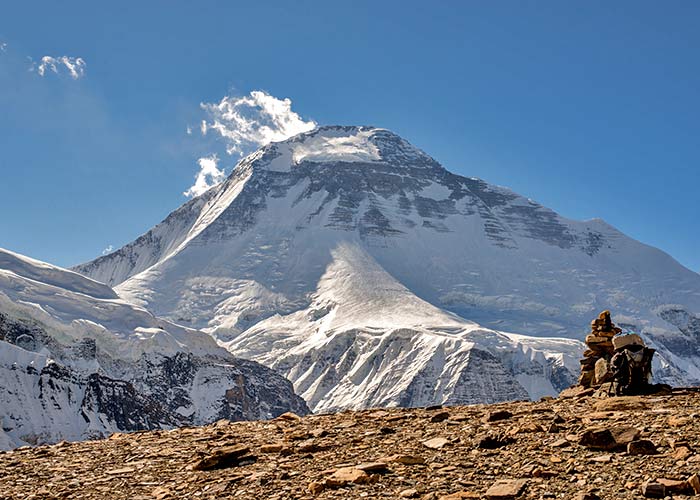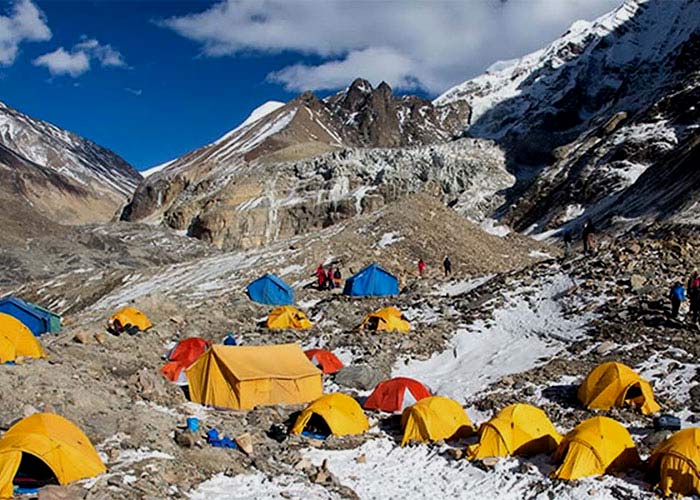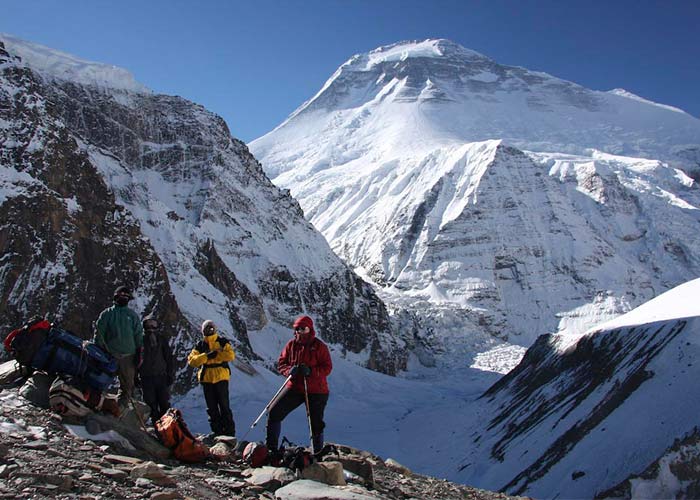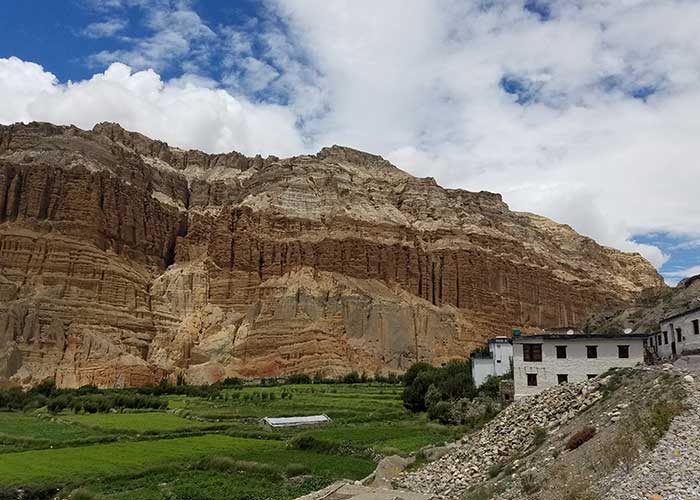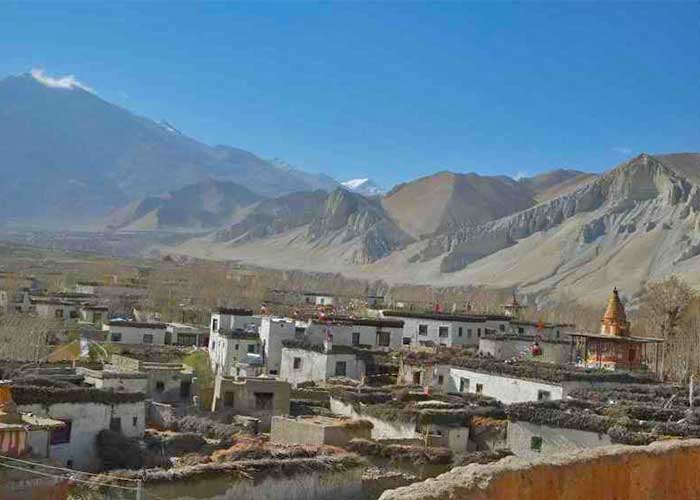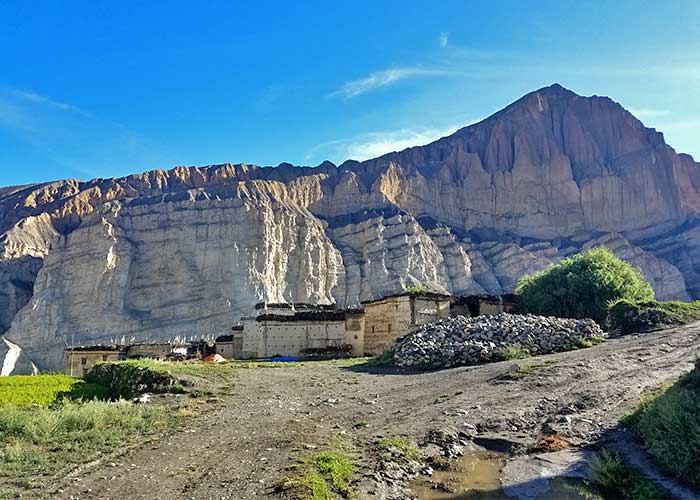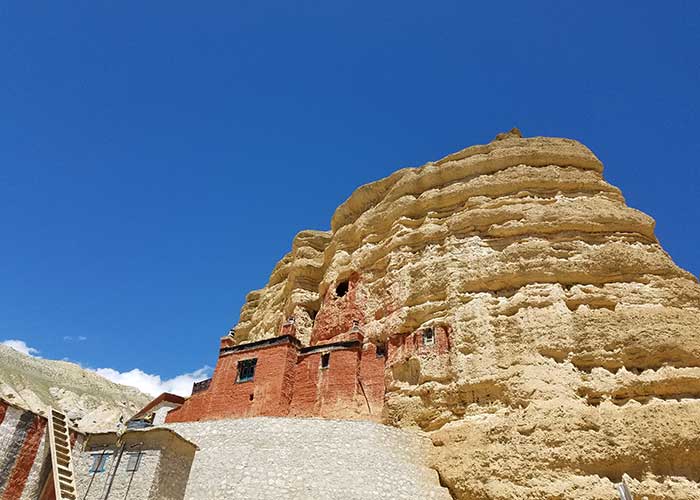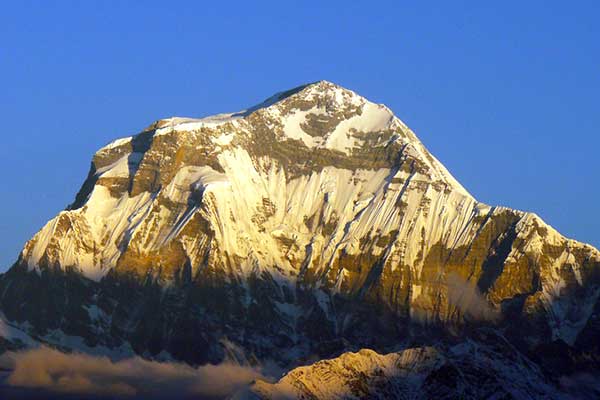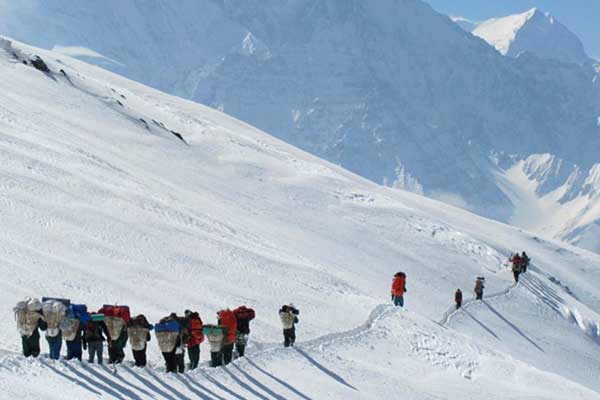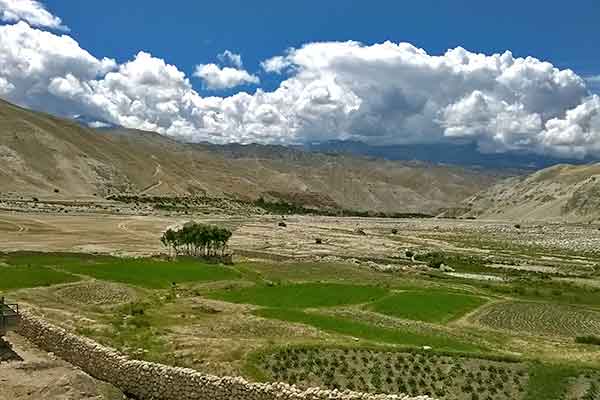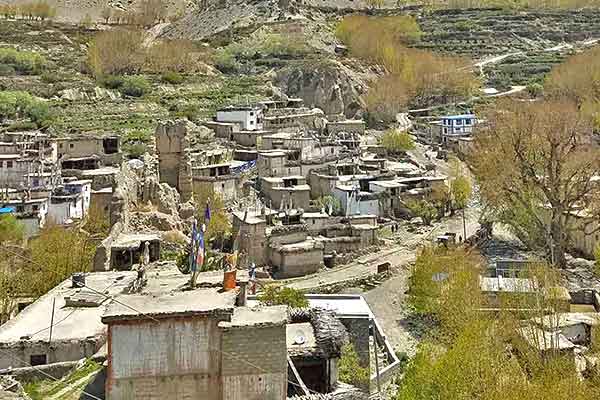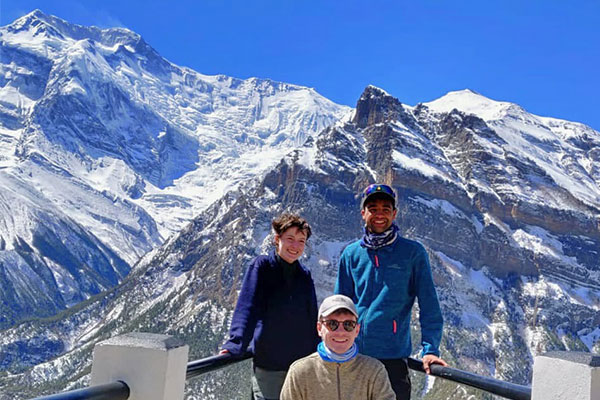Overview
Duration :
29 Days
Secondary Activity:
Nature and Culture
Max altitude :
5,200m/17,060ft
Transportation:
Domestic Flight and Private Vehicles
Trip ends in:
Kathmandu
Accomodation:
Tent-Camp and Lodge
Primary activity:
Trekking and Hiking
Group Size:
Min. 2 pax
Country:
Nepal
Trip starts from:
Kathmandu
Diffficulty:
Strenuous
Meals:
Nepali and Continental
Best Season:
Autumn and Spring
Trip route:
Kathmandu-Pokhara-Darbang-Sibang-Soligari-Dhaulagiri-Yak Kharka-Dhampus Pass-KagbeniSyanbochen-Charang-Ghiling-Jomsom-Pokhara-Kathmandu
Trip introduction
“Keep your head held high, live your life, and travel as much as you can.”
Mt. Dhaulagiri is the seventh most noteworthy mountain (8,167 meters) on the planet. Trekking around the goliath Himalayan Peak Dhaulagiri is a standout amongst the most difficult treks. The Dhaulagiri lies northwest of Pokhara, an essential territorial town and visitor focus. Dhaulagiri plus Upper Mustang trek is a best-suited trek just to fit people wishing to go on remote requesting trekking in Nepali done in the lap of Mt. Dhaulagiri. On this trekking trail, you can get the chance to investigate the stunning ways of life of Gurung and Magar people groups and their way of life close to that you can see wild creatures.
Overview of Dhaulagiri plus Upper Mustang Trek
Trekking in Dhaulagiri gives huge mountains scope of Dhaulagiri comprising of fifteen 7,000 meter crests is radiant. Our 29 days Dhaulagiri Trek in addition to Upper Mustang Trek starts from a place called Darbang which can be reached within 5-6 hours by driving from Pokhara.
Despite the fact that you do require a feeling of enterprise and an expanded capacity to manage startling this trek can be massively advantageous and satisfying at last as you achieve the High Himalayas. We should be trekking in a newly opened empowering and thrilling area. The area is loaded with many long-kept secrets, similar to the most profound Gorge on the planet Kali Gandaki.
Some more insight into Topography
Topographically, it is a place that is known for its showy and luxurious difference. Our trek should experience colossal urgent mountain passes, traverse the French pass (5,360 meters) and Thapa Pass (5,200 meters); it is a testing stroll on a super cold trail. The goliath mountain scopes of Dhaulagiri are when all is said in done made up many taking off mountain crests. The discharged bowl is limited by high mountains thus on the off chance that it snows and you don’t have an accomplished guide then it should turn into a great deal hard to discover the trekking course.
Another real part of our trek should be the Upper Mustang district. This is carefully done around the Trans Himalayan segment which is broadly known as the “Last Forbidden Kingdom”. And lies in the rain shadow of the Dhaulagiri massif creating a rugged dried territory encased by rocks in all sorts of hues and striking courses of action.
End of the Dhaulagiri plus Upper Mustang Trek
A short time later toward the finish of our trek, we should dive on towards Jomsom. And after coming to where we might take a flight to Pokhara. Or we can bring a drive down to Pokhara from Jomsom. In conclusion, we might drive or take a flight back to Kathmandu and end our trek.
Who can join this trek and what is the best time?
Our Dhaulagiri plus Upper Mustang Trek expects trekkers to have a sharp feeling of an enterprise to adapt to the coming difficulties. As our trek requests high physical wellness and past trekking knowledge alongside routine practicing hone. This trekking course typically stays shut amid the winter time frames. So, for the most part, April to June and Mid-September to Mid-November are esteemed as the best finest seasons to go for this trek. Be ready for an exploratory and bold tough/downhill trek with some eager closures in transit.
Come and join the Nepal Mountain Trekkers for this indulgent Dhaulagiri plus Upper Mustang trek.
Special Note:
If this itinerary doesn’t suit your requirement or if you want to customize it, please feel free to contact us. This trek could be customized as per your required time frame and budget limits.
Overview
-
Day 1Arrival Kathmandu. (1,350m/4,428ft)
-
Day 2Kathmandu Sightseeing & Preparation for the Trek:
-
Day 3Fly/Drive to Pokhara(820m/2,690ft): 5-6 hrs. drive/35 minute flight
-
Day 4Pokhara drive to Darbang (1,180m/3,871ft): 5-6 hrs.
-
Day 5Darbang to Sibang (1,750m/5,741ft): 5-6 hrs.
-
Day 6Sibang to Jugapani (2,000m/6,561ft): 5-6 hrs.
-
Day 7Jugapani to Dobang (2,260m/7,414ft): 4-5 hrs.
-
Day 8Dobang to Soligari (3,100m/10,170ft): 4-5 hrs.
-
Day 9Soligari to Italian Base Camp (3,600m/11,811ft): 4-5 hrs.
-
Day 10Acclimatization Day
-
Day 11Italian BC to Chhonbardan Glacier Camp (4,200m/13,779ft): 4-5 hrs..
-
Day 12Chhonbardan Glacier Camp to Dhaulagiri Base Camp (4,600m/15091ft): 4-5 hrs.
-
Day 13Acclimatization Day
-
Day 14Dhaulagiri Base Camp to Hidden Valley (5,050m/15,568ft) via Cross the French Col (5,360m/17,600ft): 6-7 hrs.
-
Day 15Hidden Valley to Yak Kharka (3,680m/12,073ft) via Dhampus Pass (5,200m/17,060ft): 8-9 hrs.
-
Day 16Yak Kharka to Kagbeni(2,810m/9,219ft): 4-5 hrs. (Start early in the morning due to the windy valley)
-
Day 17Kagbeni to chele (3,050m/10,004ft): 5-6 hrs.
-
Day 18Chele to Syanbochen (3,475m/11,398ft): 6-7 hrs.
-
Day 19Syanbochen to Ghaymi (3,520m/11,546ft): 5-6 hrs.
-
Day 20Ghaymi to Charang (3,500m/11,480ft): 4-5 hrs.
-
Day 21Charang to Lo-Mangthang (3,700m/12,136ft): 5-6 hrs.
-
Day 22Explore Lo-Mangthang
-
Day 23Lo-Mangthang to Drakmar (3,810m/12,500ft): 6-7 hrs.
-
Day 24Dhakmar to Ghiling (3,806m/12,484ft): 5-6 hrs.
-
Day 25Ghiling to Chhuksang (3,050m/10,004ft): 5-6 hrs.
-
Day 26Chhuksang to Jomsom (2,700/8,856ft): 6-7 hrs.
-
Day 27Fly/Drive Jomsom to Pokhara (820m/2,690ft): Flight 25 minute/7-8 hrs. drive
-
Day 28Fly/Drive Pokhara to Kathmandu: 5-6 hrs. drive/35 minute flight
-
Day 29Departure Day
Detail Itinerary
Day 1 : Arrival Kathmandu. (1,350m/4,428ft):
It is a panoramic thrill flying into Kathmandu on a clear day. The views of snow-capped mountain peaks sprawling down below you are almost ecstatic, beginning a whole chain of memorable experiences that stay with you for a long, long time. A representative of Nepal Mountain Trekkers will meet you at the airport and escort you to your hotel. The representative will help you check into your designated hotel. At the hotel, you will be briefed about your daily activities. Stay overnight at Kathmandu.
Day 2 : Kathmandu Sightseeing & Preparation for the Trek::
Today you will have a full day for a sightseeing tour of the valleys’ popular UNESCO World Heritages. Kathmandu is the historical and cultural heart of Nepal and has been a popular destination for tourists ever since Nepal opened its doors to visitors. The city presents a wonderful mix of Hinduism, Tibetan Buddhism, and Western influence. There will be a guided tour to the largest Buddhist stupa in Nepal Boudhanath and after that to the most popular Hindu shrine dedicated to Lord Shiva- Pashupatinath. We take a tour to Patan or Lalitpur (the City of Artisans), which is 5 km away from Kathmandu. We walk through Patan Durbar Square, and delight in the architectural wonders of the Malla era. Mahaboudha Temple, Kumbeshwor Temple, Krishna Temple, and Golden Temple are the major attractions at the square. And stay overnight in Kathmandu.
Day 3 : Fly/Drive to Pokhara(820m/2,690ft): 5-6 hrs. drive/35 minute flight:
From Kathmandu, we take a half an hour scenic flight to Pokhara or we drive for approx 6 hours to Pokhara. You can spend the later part of the day exploring Pokhara. Set amidst the spectacular backdrop of the Annapurna, Dhaulagiri, and Machhapuchhre, the must-visit sites of Pokhara include Phewa Lake, Davis fall, Mahendra cave, the famous Seti Gorge, the beautiful temple of Bindabasini, and Pokhara Mountain Museum. And stay overnight at Pokhara.
Day 4 : Pokhara drive to Darbang (1,180m/3,871ft): 5-6 hrs.:
Our journey starts with another short drive on the dirt road following the raging Myagdi River upstream, passing a number of farm villages and cultivated lands with terraces of rice, wheat or barley, and mustard, after three hours of good interesting drive reaching at Darbang village-like town an entrance or the gateway to Dhaulagiri and towards Dhorpatan and Dolpo area, after a stop for a lunch break, our first-day walk begins on the trails that wind up slowly for an hour to the hills, leaving the Myagdi river way down below, then heading towards cooler area after reaching the top ridge on the outskirt farm village and descend back to Myagdi River after a nice first day walk to camp by the Riverside with fabulous views of Putali and Ghurja Himal, adjoining Dhaulagiri massif chain of mountains during the day trek. And stay overnight at Darbang.
Day 5 : Darbang to Sibang (1,750m/5,741ft): 5-6 hrs.:
2 hrs of the climb from Darbang will lead you to Dharapani (1,562m) from here you get a good view of Putha Hiunchuli, and Dhaulagiri. 2 hrs climb and 1½ hrs straight trail will take you to Sibang. You find plenty of Thakalis and Gurungs in this village. Even from here, you get a view of the Dhaulagiri region and Putha Hiunchuli (5 and a half hrs walk). And stay overnight at Sibang.
Day 6 : Sibang to Jugapani (2,000m/6,561ft): 5-6 hrs.:
From Sibang 3 hrs straight trail will bring you to Dar Khola. From Dar Khola, a straight trail of 4 hrs will take you, Muri. The people of this village are known as Kamis. From here you can get a good view of Dhaulagiri and Putha Hiunchuli. After 2 hrs descent, you cross Marshyangdi Bridge. One-hour descent and the one-hour straight trail will lead you to Jugapani. And stay overnight at Jugapani.
Day 7 : Jugapani to Dobang (2,260m/7,414ft): 4-5 hrs.:
Ascend steeply for about an hour. The trail is now high above the river valley, etched along the cliff. In any case, the trail is at least 5 feet wide at the narrowest sections. After an hour or so, you will arrive at the smaller village of Boghara. From Boghara, walkthrough cornfields and ascend steeply to the ridge. The trail then becomes a gentle uphill. Lunch is at Lipshe, a small clearing of the forest used by cattle herders during the monsoons. After lunch continues through the thick forests for 2 to 3 hours (gentle uphill) to Dobang. Dobang is a largish clearing in the forest with two huts and a large area for tents. And stay overnight at Dobang.
Day 8 : Dobang to Soligari (3,100m/10,170ft): 4-5 hrs.:
Today’s walk continues through the forest, a bit like a gigantic natural Botanical Gardens Walk! First, we cross the Konabain Khola and then cross the Myagdi Khola, both on seasonal wooden bridges (interesting!). The path then stays on the east bank of the main valley, reaching Soligari at 3,100m after a few hours. And stay overnight at Soligari.
Day 9 : Soligari to Italian Base Camp (3,600m/11,811ft): 4-5 hrs.:
Follow a trail to the terminal moraine of the Chhonbarban Glacier and enter the glacier from the right. Tukche Peak (6,837m) becomes visible straight ahead; at the far end while the impressive north flanks of Dhaulagiri I (8,167m) dominates the skyline to your right. After a short while, you will reach Italian Base Camp (3,660m), which is also the site of your camp for the night. To the west are the peaks of Dhaulagiri II (7,751m), Dhaulagiri III (7,715m), and Dhaulagiri V (7,618m). Stay overnight at tented camps.
Day 10 : Acclimatization Day:
We will spend a day acclimatizing to the thinning of the air. It is recommended that your body acclimatizes to the high altitude and be adjusted for higher altitudes in the days to follow. Stay overnight at tented camps.
Day 11 : Italian BC to Chhonbardan Glacier Camp (4,200m/13,779ft): 4-5 hrs..:
To gain access to the upper valley, which will, in turn, take us to the Chhonbardan Glacier, we have to cross a huge breach in the moraine and the frozen debris of a massive avalanche fan that forms at the bottom of the west face. The initial descent down the moraine slope is very steep, so the Sherpas will run a rope out as a handrail, as much for the benefit of the porters as for the group. Climbing the slopes on the other side is straightforward (if steep); this section could present problems if icy, or if covered in fresh snow. Once in the upper valley, we pass the site of a large bivouac cave and the sites of the American and French Base Camps. The path is now backing on the west side of the river and soon leads us onto the Chhonbardan Glacier, which is completely moraine-covered in its lower reaches. At around 4,220m there are platforms leveled on the glacier’s surface, which can accommodate our camp for the night. This is quite a short day, but it is important not to ascend at this altitude too quickly.
Day 12 : Chhonbardan Glacier Camp to Dhaulagiri Base Camp (4,600m/15091ft): 4-5 hrs.:
Another fairly short day, taking perhaps 4 or 5 hours to walk up the moraine-covered Chhonbardan Glacier to “Dhaulagiri Base Camp” at 4,600m. Base Camp is really a huge area of the glacier where expeditions have based themselves over the years. Terraces have been leveled on the stony ground and there is a choice of sites depending on who else is around. As at Italian Base Camp, we will spend 2 nights here to become well acclimatized before going over 5,000m.
Day 13 : Acclimatization Day:
It’s another day to take some rest today but more importantly a day to acclimatize with the lower air pressure of this region. Views from this place are superb and there is plenty to explore. Stay overnight at tented camps.
Day 14 : Dhaulagiri Base Camp to Hidden Valley (5,050m/15,568ft) via Cross the French Col (5,360m/17,600ft): 6-7 hrs.:
So now we head towards the Hidden Valley today. The path from Base Camp goes along the north side of the glacier. It is flat for a while, and then it climbs a steep bank to eventually follow the crest of a massive moraine ridge to wide, open slopes that lead to the crest of French Col/Pass at 5,400m. It should take 4 or 5 hours to get there. Cairns, prayer flags, and wonderful views provide a distraction for a rest before descending easy slopes into “Hidden Valley”, where we find a campsite for the night at around 5,050m. And stay overnight at Hidden Valley.
Day 15 : Hidden Valley to Yak Kharka (3,680m/12,073ft) via Dhampus Pass (5,200m/17,060ft): 8-9 hrs.:
Here onwards we now move towards yak Kharka. Our morning walk leads on the narrow path towards Thapa / Dhampus pass about two hours walk in snow conditions it can take an hour more with awesome views of Tukuche peaks and of Nilgiri’s Himal on the other side of the Kaligandaki valley, after few hours of gradual walk reaching at Thapa / Dhampus Pass at 5,250 m overlooking the deep cleft of Kaligandaki Valley and the Annapurna mountains ahead. From the high spot of this with the panorama of mountains on both sides of Dhaulagiri-Tukuche-Thapa or Dhampus peak, then on the front Nilgiri’s and Annapurna mountain range, after a glorious moment here a long descend to the overnight camp at Yak Kharka.
Day 16 : Yak Kharka to Kagbeni(2,810m/9,219ft): 4-5 hrs. (Start early in the morning due to the windy valley):
From Yak Kharka it is still over 1,000 meters to the floor of the valley, but once there, it is only about an hour’s walk northeast to Jomsom. We will stay here for the rest of the day and overnight in anticipation of our flight to Pokhara tomorrow. In the event of bad weather and there being no flights out of Jomsom, the alternative is to walk, jeep, and bus south to Beni. This valley is part of the famous Annapurna Circuit, but a road has been extended to Jomsom and stays overnight at Jomsom.
Day 17 : Kagbeni to chele (3,050m/10,004ft): 5-6 hrs.:
We proceed to our overnight destination from Kagbeni passing through the settlements of Tangbe, Chhusang, and reach the Tibetan culture-dominated Chele village. Towards the east bank of Kali Gandaki River, we traverse ahead over ridges, towards the north, and reach the Tangbe village. This village is marked by the complex trails amongst the whitewashed settlements, cultivations, and apple orchards. We are looked over by the Nilgiri Mountain all along our way. After the village, we move further along to Chhusang village then cross the river to move ahead, out of the Kali Gandaki valley we climb up to Chele village. This marks the end of the influence of Manangi culture and the beginning of the Tibetan culture of Lo. Overnight in Chele.
Day 18 : Chele to Syanbochen (3,475m/11,398ft): 6-7 hrs.:
From the village of Chele, we have a steep ascend westwards, opposite to the village of Ghyakar and along the deep crayon turning right and following the gorge. On along the rocky trail, past the steep descend on some section of the trail, we reach the top of the pass with the view of Kali Gandaki River and mountains in the distance along with the view of Samar village. Descending from the pass, past a creek, we reach a red painted cave monastery or the Rangchyung Chorten, believed to have hosted the famed Buddhist saints Padmasambhava and Atisha centuries ago. Through the forests and gouges with high vertical walls, we reach an area where walls with temporary homes for herders. With a constant and relatively easy climb, we reach Syanbochen, a village with a cluster of homes. Overnight in Syanbochen.
Day 19 : Syanbochen to Ghaymi (3,520m/11,546ft): 5-6 hrs.:
The initial phase of today’s trekking consists of crossing one of the three high passes to be crossed today, the Yanda La pass. We move past distinctive Chortens painted with Buddhism’s auspicious symbols. We march through the terraced valley to the village of Ghelung above which we have two red Gompas. Through this sparsely settled village, we have Nyi La Pass ahead. The path further descends gradually and leads us to the Ghami La pass past the villages and deserted landscapes which shall be further rugged as we move along the trail. Further, ahead we have a village above the river and surrounded by fields and by hills a bit further. This is Ghaymi village which is the third-largest settlement in the Mustang valley. Overnight in Ghaymi.
Day 20 : Ghaymi to Charang (3,500m/11,480ft): 4-5 hrs.:
Today we shall have a shorter trekking journey as compared to the previous day. We start with paying a visit to Mustang’s longest Mani wall, adorned with the carvings, accompanied by the group of Chortens that mark the end of the valley. Legend has it that Guru Rinpoche destroyed a demon whose intestine landed at the present location of the Mani wall, its lungs near the red cliffs behind and its heart at the spot of current Lo Gekar monastery, the oldest monastery in Mustang. We ascend gradually up to a pass and move ahead through barren lands to reach Tsarang Chorten and the palace of Tsarang. Along the broad road, we reach the destination of today’s overnight stay, the settlement of Tsarang (Charang). Tsarang was the capital of the ancient Lo kingdom in the 14th century. Overnight in Charang.
Day 21 : Charang to Lo-Mangthang (3,700m/12,136ft): 5-6 hrs.:
Our destination for today will be the famous settlement of Lo Manthang. We pass through the Caharang Chu canyon initially and climb steeply after we cross the river as we leave the palace and gompas behind. We trek for few hours along with the barren lands, through valley bed, past the ruins of ancient fortress and monasteries, and have the famed walls of Lo Manthang ahead in the trail, and before that we cross the windy pass of Lo. Trekking along the southern walls of the surrounding city we reach the small bridge and walk into the closely guarded town. The residence to King Jigme Palbar Bista, his four-storied palace inside the city walls, and the ancient legacy of the dynasty ruling the Mustang region since ages ago make this walled city that neighbor the Tibetan border. Overnight in Lo-Mangthang.
Day 22 : Explore Lo-Mangthang:
Lo-Mangthang is a beautiful, culturally rich, and architecturally sound settlement with a well-preserved legacy since the 14th century. Inside the walled city, we can explore four major ancient shrines, brick-red Jampa Lhakhang (the oldest gompa), a 50-foot large clay statue of Buddha, 15th century-old /Thubchen Gompa, and Choprang Gompa. Besides the Royal Palace of the Mustangi King, Mustang has an interesting village with unique cultural values and lifestyles that may be alienly natured to the outsiders. The Tall Champa Lakhang, red Thugchen Gompa, and the Entrance Hall are some of the other main attractions of the town. Besides the cultural richness, we can also explore the cave village of Chosar with deep red Nyhu Gompa, which reached past two bridges. We can also wander around to Harphu Gompa on the east ban of Mustang River, the ancient cave-dwelling site of Jhong Cave, the Nyamdo Gompa, Namgyal Gompa in the village of Namgyal, and other villages such as the Phuwa and Chosar valley as a part of our exploration in and around the walled city of Lo-Mangthang. White-washed villages, an old fortress, ruins of ancient palaces and monuments, and the most famous palace of Mustangi King are the other highlights in the valley. Overnight in Lo-Mangthang.
Day 23 : Lo-Mangthang to Drakmar (3,810m/12,500ft): 6-7 hrs.:
After the exploration of this unique and interesting walled city of Lo-Mangthang, we take a different rail than the original trail we followed on our way into this Forbidden City. We trail back to Chogo La pass on an uphill climb and further on the trail becomes easier which leads us downhill to the settlement of Drakmar, our overnight stay for today. We explore the Ghar Gumba that falls past the halfway of today’s trail. The Gompa has beautiful rock paintings and locals believe that the prayer in this shrine is surely heard. After we have a break at the spot, we trail ahead for a couple of hours to reach the Drakmar. Overnight in Drakmar.
Day 24 : Dhakmar to Ghiling (3,806m/12,484ft): 5-6 hrs.:
We are already on the second half of the trekking expedition. Today we shall aim for our overnight stay in the village of Ghiling after a tiring walk of around 5-6 hours. The exploration of Ghiling is advised to be done in the evening as the windy afternoon makes it difficult for the trekkers to look around. The trek to Ghiling takes the trekkers on the encounter with villages, impressive Chortens, monasteries, and amazing landscapes. Overnight in Ghiling.
Day 25 : Ghiling to Chhuksang (3,050m/10,004ft): 5-6 hrs.:
Today is another day that takes us further towards the end of the trekking experience through these unique and desert-like landscapes decorated by cultural legacies and glorious mountains. On our way to the village of Chhuksang, we have breathtaking views of the Himalayas, scenic diversity, and interaction with the locals that make you ponder on the resilience and hospitality of the locals along the trail. Overnight in Chhuksang.
Day 26 : Chhuksang to Jomsom (2,700/8,856ft): 6-7 hrs.:
This is the last section of this trekking trip that shall have strenuous physical walking. We shall have longer trekking and start early to reach the settlement in Kagbeni. This also marks the end of the Upper Mustang trail and the joining of the Annapurna circuit trekking trail. Kagbeni is a historical village and the Door to the Kingdom of Mustang that still retains the medieval charm to date. Having rested in Kagbeni we shall move towards the beautiful Jomsom. The district headquarters of Mustang, Jomsom has almost everything needed for tourists, from hospitals to airports, from excellent hotels to delicious cuisines and spectacular views of Mount Nilgiri. Overnight in Jomsom.
Day 27 : Fly/Drive Jomsom to Pokhara (820m/2,690ft): Flight 25 minute/7-8 hrs. drive:
Today we have two choices; we can have our breakfast then fly to Pokhara with a free day in Pokhara or take a drive to Pokhara which might last till 8 hours. After reaching Pokhara we will stay overnight there in a hotel.
Day 28 : Fly/Drive Pokhara to Kathmandu: 5-6 hrs. drive/35 minute flight:
Morning a scenic drive to Kathmandu, after a wonderful memorable trip in the high mountains of Annapurna area or we go on a drive to Pokhara then on reaching Kathmandu transfer to respective hotels with afternoon free at leisure. Stay overnight at Kathmandu.
Day 29 : Departure Day:
Today we shall be saying goodbye to each other. You shall be transferred to the airport at least 3 hours before the scheduled flight of yours by our representative. Hope to have you in this beautiful nation again and again. The trip concludes today. Our representative will drop you at the international airport in Kathmandu for your flight departure from Nepal.
Price Includes
- Airport pick up and drop service
- 3 Nights Hotel in Kathmandu (Hotel Green Horizon or similar standard)
- 2 Nights Hotel in Pokhara
- All accommodation during the trek in the best hotels/tea-houses in the area (differing according to the price you wish to spend)
- Sanitation: The accommodation we provide will be neat and clean with warm-hospitality and quality services.
- Single Accommodation: You won’t have to share your accommodation with anyone else so that your privacy is protected.
- All foods during the trek: Breakfast, Lunch, and Dinner; any items on the menu as much as you wish to consume.
- We provide hygienic and safe meals to re-energize you.
- We request you not to waste your meals for it is difficult to transport food in the rural area.
- You are not allowed to share your meals with anyone else from another group.
- Transportation costs: Drive or take a domestic flight in (Kathmandu-Pokhara- Kathmandu) route as per itinerary
- Also another flight or drive-in (Pokhara-Jomsom-Pokhara) route as per itinerary
- Professional and Highly experienced English-speaking Trekking Guide licensed by the Government. Including their lodging and food.
- Local Staffs: Our guides are locals of the region which ensures that you will surely get to explore a bit more during the trek than with any other guides.
- Experienced: With an experience of more than a decade of working in this field, our trekking guides possess excellent knowledge on briefing during the trek as well as they are experts in handling all kinds of critical situations that might occur during the trek.
- Insurance: Nepal Mountain Trekkers have an insurance policy for all our trekking staff.
- Porters (1 porter for 2 trekkers with a max load of 25 KG). Including their lodging and food.
- Local Staffs: The porters we hire belong to the same region where we trek in order to provide employment opportunities to the locals as well as to make you explore every prospect of the region.
- Trekking permits: Upper Mustang Special Permit and Annapurna Conservation Area(ACAP) fees
- First aid medical box
- Trekking gears like a sleeping bag and down jacket made available on rent
- Rescue Arrangement Service
- 13% VAT and 10% company service charge
- Farewell Dinner
Price Excludes
- Visa fee to enter Nepal (Visa Information)
- International flight tickets and extra baggage charges
- Extra night accommodation and meal costs in Kathmandu due to any change in the scheduled itinerary
- Travel insurance/ Rescue operation costs
- All personal expenses
- Tip for guides and porters is expected but not mandatory
Equipments
 Head
Head
- Sun hat or scarf
- Light balaclava or warm fleece hat
- Sunglasses
- Head Torch
- Suncreams(40+) and Lip Balms
 Upper body
Upper body
- Cotton t-shirts and thermals
- Fleece jacket
- Waterproof jacket
- Down jacket
 Lower body
Lower body
- Lightweight cotton pants (long)
- Waterproof pants
- Inner thermals
 Feet
Feet
- Thin inner socks (3 pairs)
- Thick, warm wool hiking socks
- Comfortable hiking boots
- Shower sandals
 Hands
Hands
- Gloves (Cotton and Waterproof)
- Creams
- Sanitizer
 Accessories
Accessories
- Sleeping bag rated to -20°C +
- Trekking bag (Rucksack)
- Duffel bag
- Large plastic bags (for keeping items dry inside trek bag)
- Trekking poles (optional, recommended)
- Water bottle or camel bag
- Toiletries and Tissue Papers
 First aid kits
First aid kits
- Personal Regular Medicines
- Knee Caps
- Bandages
- Ointments
- Blister Tape
Related Trips
You will also like …
